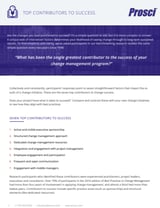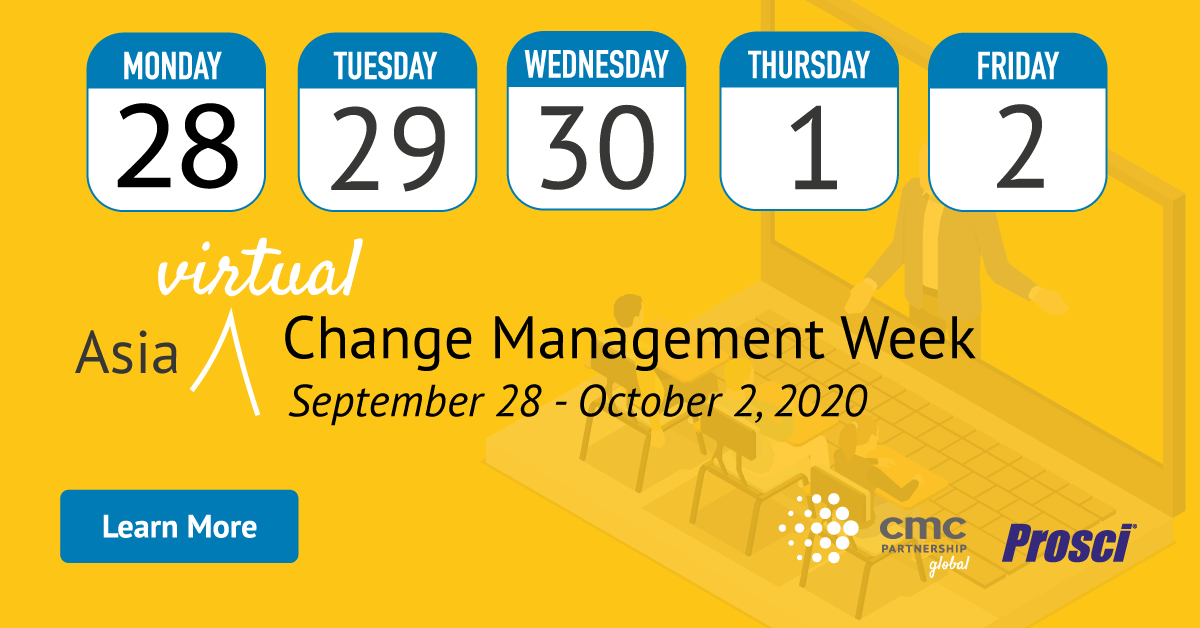When change, or the rumour of change, first surfaces in an organisation, many important questions arise, principally "why?", "why now?" or "what if we don't?" Too often these questions go unanswered or are poorly answered in the minds of impacted and already very busy employees and managers.
It can be easy to get too focused on the details of newly introduced change initiatives and forget about the roots of best practice change management, which should focus on clearly answering these sensible and rational questions.
In this blog, we overview The 5 Tenets of Successful Change which act as central guiding principles to change management best practice.
Tenet 1: We change for a reason
When change happens, it happens for a reason, most often a demand for business performance improvement. Implementing change involves moving from a current organisational state of working through a transition toward a desired future state. It is common for change to occur as an attempt to address a current issue or to take full advantage of a future opportunity. In this context the directly impacted employees need a compelling reason(s) if they are to change.
Tenet 2: Organisational change requires individual change.
It is common practice for businesses to view change as occurring at the organisational level. We name changes organisationally - the new Enterprise Resource Plan (ERP), the cloud transition or the relocation project, for example. The reality is that in organisational change each directly impacted employee needs to change their personal ways of working. Often individual employees progress through a change in different ways and at different speeds and therefore require different levels of support, training, coaching and encouragement if they are to succeed in their personal transition.
Tenet 3: Organisational outcomes are the collective result of individuals changing.
Each individual impacted by a change must successfully navigate their own path to the new ways of working - the changes to their daily tasks - required by their role. If enough employees make this successful transition the organisation will accumulate the Return on Investment (ROI) it requires. There are three common components that help to maximise the level of ROI, and all three are related to people: -
Speed of adoption - how quickly employees move through transition. Ultimate utilisation - how many employees make the successful transition. Proficiency - how well employees perform and adopt the new ways of working required by the change.
Download: Top Contributors to Change Success
Tenet 4: Change management is an enabling framework for managing the people side of change.
Given our understanding that employees successfully navigating a transition directly influence the level of ROI we can expect from a change it becomes important to organise and structure this transition for all employees. Often large organisational changes are large not just because the nature of the change is complex or disruptive but also because it impacts large numbers of employees in multiple locations with unique roles and cultures. A structured change management process can help to address these different dimensions of complexity in an efficient and effective manner.
Tenet 5: We apply change management to deliver the benefits and desired outcomes of the change.
Therefore the purpose of effective change management is to help organisations ensure that their change projects are significantly more likely to finish on time and on budget, deliver their expected business results and, most importantly, realise their tangible and expected ROI. According to Prosci's Best Practices in Change Management Research organisations that apply a structured change management process with excellence are six times more likely to meet or exceed project objectives than organisations that apply poor or no structured change management process.
Learn more
Learn more about Prosci's Five Tenets whilst becoming certified in the change management methodology adopted by 80% of Fortune 100 companies!
Join one of our face-to-face or virtual Change Management Practitioner Certification Programmes in the coming weeks.
We're also offer both face-to face and virtual training privately for your organisation! Interested? Get in touch.



